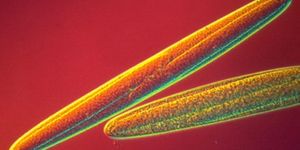All food allergies are not created equal. In fact, researchers from the University of Southampton set out to prove just that. In a unique new study, and with 1140 pregnant women as participants, scientists showed both the prevalence of two different types of allergies and the different factors that increase the risk of developing these allergies.
If parents suspect their child might have a food hypersensitivity, they could request a blood test from their doctor to look for immunoglobulin E (IgE) in the blood. IgE is an antibody with connections to allergies reactions and some allergies are IgE-mediated, but some are not. Therefore, a negative IgE blood test wouldn’t completely clear a child of having an allergy.
“These tests are only useful for IgE mediated food reactions and therefore are not useful in diagnosing non IgE mediated food allergies,” explained senior research fellow Dr. Kate Grimshaw. “IgE mediated and non-IgE mediated should be considered as two separate conditions and treated accordingly.”
IgE-mediated allergies and non-IgE mediated allergies differ in a few different ways, the researchers found. They observed their 1140 participants throughout their pregnancies, and after each child’s birth until they were two years old. First, IgE-mediated allergies usually cause skin rashes, vomiting, or respiratory issues. However, they can also cause life-threatening reactions as well. In contrast, non-IgE mediated allergies usually consist of mild stomach irritation, occurring between four and 28 hours after ingesting the food.
The scientists also found that these two different types of food hypersensitivities are associated with different risk factors. Egg and peanut allergies, most often occurring as IgE-mediated hypersensitivities, are worse when in conjunction with eczema or rhinitis.
“Possibly due to a certain gene defect that prevents the skin barrier from forming correctly, leading to possible exposure of the immune system to allergens,” Grimshaw explained.
On the other hand, milk allergies, usually non-IgE mediated, proved to be worse for children in household with pets. In addition, the scientists made a connection between non-IgE mediated allergies and the age at which mothers starting feeding their children solid food.
Grimshaw, whose study was published in the journal
Clinical and Translational Allergy, also had an explanation for this result.
“Pet ownership may increase the likelihood of gut reactions to food, perhaps by altering the gut flora, which can affect how the digestive system works.”
Luckily, the scientists also observed that a healthy diet helps to reduce the severity of both types of allergies. This is likely due to the disease-preventing and immune-boosting characteristics of the nutrients in fruits and vegetables.
Scientists from the University of Southampton and others will continue to investigate childhood allergies, but for now, knowing the risks and remedies will help to lessen the severity of both types of hypersensitivities.
Source:
University of Southampton









